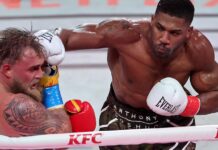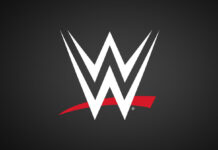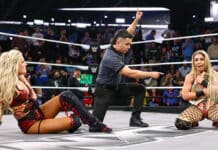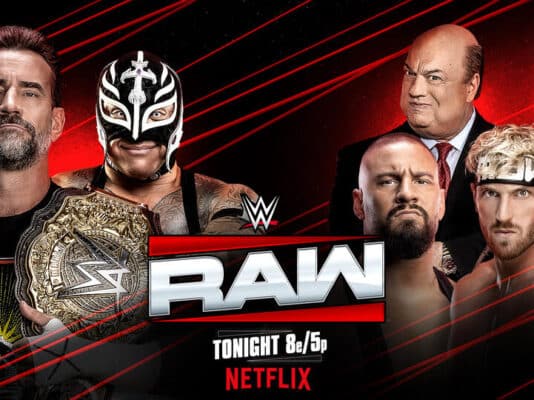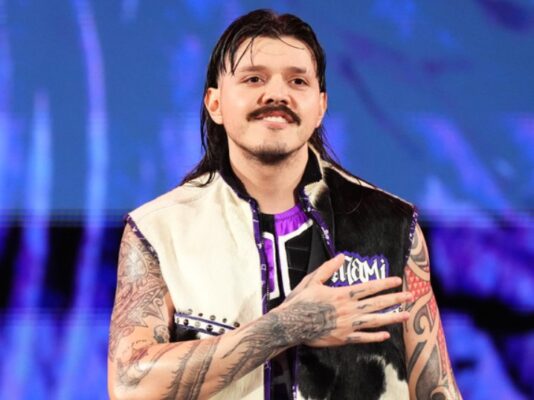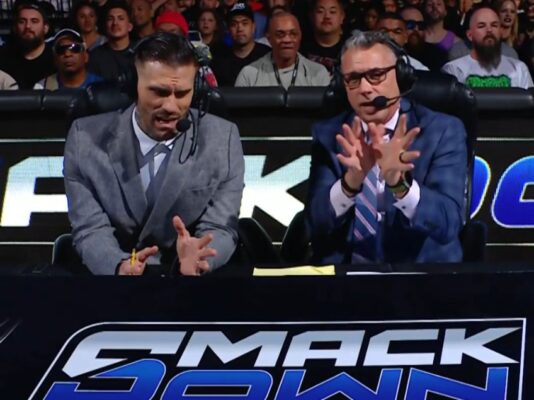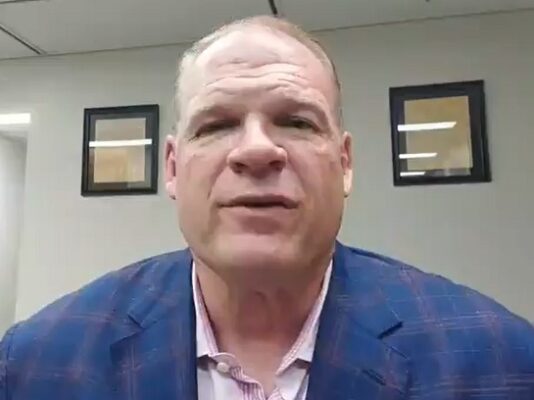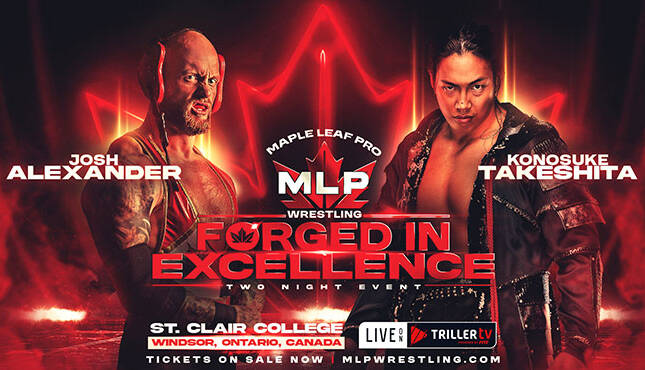
Within the crowded pro wrestling landscape, we’ve seen some aspects of the industry condense, while other working agreements have yielded expanded exposure for other groups. As we know, the pro wrestling calendar, which usually peaks around Wrestlemania, sill remains busy, with more pay-per-views being added by All Elite Wrestling on an almost monthly basis, this weekend’s Bound For Glory PPV in Detroit, and next Saturday’s Crown Jewel event from Saudi Arabia.
However, in the midst of the changing dynamics of the industry, particularly with AEW’s new TV deal with Warner Brothers Discovery, and WWE’s move to Netflix early next year, a very unique pro wrestling product launched last weekend. Maple Leaf Pro, a revamp of the classic Toronto territory of the 70s and 80s under the direction of Frank Tunny with ties to the WWF, was brought back in 2024. Scott D’Amore, former wrestler, trainer, and head of TNA, acquired the trademarks for Maple Leaf Pro Wrestling in May of this year. D’Amore, who was affiliated with TNA as far back as its days in the dingy Asylum in Nashville, ran Boarder City Wrestling successfully for several years, and has a background in business, as his family owns a well-known construction company in Ontario.
In a very surprising move, after Impact was rebranded back to TNA, with D’Amore cutting a passionate promo in the ring to announce the new direction of the company, he was fired from the organization in February. Anthem Entertainment, the parent company of TNA, rescued the promotion from the brink of collapse in 2016 after Dixie Carter ran the group into the ground. There were lawsuits and even a tax lien from the state of Tennessee against the organization under Dixie’s ownership, which were paid off by Anthem when they bought the promotion. However, Anthem, which owns the Fight Network in Canada, is in the television business, not the wrestling business. Reportedly, Anthem is worth a few hundred million dollars, and in the grand scheme of things, pro wrestling is a relatively cheap investment within the television industry. Impact Wrestling was one of the highest-rated shows on the Fight Network. Again, Anthem bought Impact to keep it on the air and thus secure ad revenue, this wasn’t a full-fledged attempt to compete in the sports entertainment business.
The first few years under Anthem were abysmal, with too many blunders to name, but Anthem kept the doors open, and eventually D’Amore made TNA into a commodity that gained an underground buzz around it again, if for no other reason than the company somehow remained in business after years of uncertainty. Additions to the roster like Josh Alexander, Mike Bailey, Brian Myers, and others made for more depth within the company. Sure, Myers wasn’t the biggest star, but he was a solid veteran that can do anything that he’s asked of, which makes him a very valuable asset. For whatever reason, Alexander was under the radar and much more talented than just another indy guy so he got a chance to shine under the TNA banner. Obviously, it was a smaller pond, but for the first time in years, there was a sense of positivity and optimism around the TNA brand under the direction of D’Amore. If I had to guess, the reason that the former coach of Team Canada built more of a following for the organization in recent years is that he didn’t look for one answer to a multi-layered problem. One free agent or one major match wasn’t going to remove the stain of the Dixie Carter era so it took a series of steady steps in the right direction of quality decisions to consistently improve the product over the course of a few years.
Reportedly, D’Amore’s exit was based on the fact that earlier this year, he wanted to spend more money to bring in some of the high-priced free agents that eventually landed elsewhere. Will Ospreay was one of the names that D’Amore wanted to ink to a contract, but Anthem wasn’t interested in any type of increase in the budget. Keep in mind, Anthem views TNA as a television commodity, and while the executives understand that different wrestlers bring different things to the table, they simply aren’t going to try to compete with the offers from the billionaire family of Tony Khan or the billionaire TKO corporation. At some point it’s easier and more cost effective to invest in the rights to air reruns of series from the past. Again, Anthem is in the television business, they don’t have all the eggs in the pro wrestling basket, and make their investments based on different criteria for different networks.
Obviously, D’Amore felt that TNA had a much higher ceiling than his bosses, which led to his release from the company. It was surprising, given that much of the success that the brand had to rebuild itself to something that had the previously mentioned optimism around it was credited to D’Amore. After his exit, many of the wrestlers supported him and praised him on social media. Credit to the former Team Canada coach, he put his money where his mouth was when he actually offered to buy the company after he was fired, but Anthem declined.
It’s well-known that D’Amore is from a wealthy family that has done well in business in the Canadian market, and his ability to rebuild TNA during his most recent tenure there shows that he can get a pro wrestling project off the ground. Plus, he has goodwill with many of his peers in the industry, which can be key to working agreements.
I think those aspects are really key to the potential success of the new Maple Leaf project.
The relaunch weekend of Maple Leaf Pro was based around two shows with a potpourri of talent from AEW, TNA, and New Japan, with an emphasis on Canadian grapplers. Mauro Ranallo, known for his work in MMA and a stint in the WWE, was on the broadcast team alongside Don Callis. Mauro has a very unique style that can be a little too quirky at times, but he’s still a tremendous announcer and the pairing with Callis worked very well. Even the legendary Bret Hart did a voice over for a video package based on Maple Leaf Wrestling history. Considering that each show was over three hours, it would be too lengthy to parse details on every match, but I’d like to discuss the potential of a few of the broad concepts, as well as mention a few matches that are worth going out of your way to watch.
First, it should be noted that while D’Amore was released by Anthem, he still had a good working relationship with the TNA branch of the corporation. In truth, this looked very similar to a TNA event, running in a venue that hosted TNA shows previously and with a very similar production set up so while I haven’t seen anything to confirm it, I wouldn’t be surprised if thus Maple Leaf show actually used a TNA crew.
As far as the card itself, the talent that was brought in was very solid and different combinations were booked for each night. Some of the bouts were a little too indy so to speak or became a little too repetitive as certain multi-man matches looked very similar on the same card and then on the next night as well. This show had a little bit of everything, including defenses of the IWGP Jr. tag titles and the AEW International title, as well as the ROH Women’s title so it wasn’t strictly for the Canadian market. At the same time, Bully Ray was booked against some of the hometown competitors for a segment designed to cater specifically to the live crowd.
Miyu Yamashita had a very good match against Gisele Shaw on night one, and Mike Bailey had a really entertaining match against El Phantasmo on night two. However, undoubtedly the two matches that topped the entire weekend were Konosuke Takeshita’s bouts against Bailey and Josh Alexander. Takeshita vs. Alexander on night two in particular was a great main event.
After a smaller, but sell out crowd and more or less unanimously positive reviews on the show itself, you have to wonder, what is the goal of Maple Leaf Pro?
D’Amore’s offer to buy TNA suggested that he had lofty goals than just success on the independent level, but he might’ve found the perfect niche to run a profitable organization specifically tailored to the Canadian market. As I’ve written before, revenue and profit are the true barometer of success so if D’Amore can run half a dozen weekends a year and make money doing it, let might be the best option. Of course, it would take major cash to compete within the current wrestling landscape, and that competition might elimiate access to the talent that makes Maple Leaf a unique product. In some ways, Maple Leaf Pro could be the Switzerland of pro wrestling so to speak, a promotion where stars for different groups can compete against either other based on the trust and reputation that D’Amore has in the industry.
Obviously, this is only one pair of events, but given the level of production and the level of talent, Maple Leaf definitely isn’t aiming to be just another independent group. In some ways, with TNA expanding its live event schedule into the United States more often than in the past, it’s possible D’Amore’s group could be the unofficial Canadian division of TNA so to speak, in terms of catering to the Canadian market. The name alone implies that this probably isn’t going to be a group that tries to compete on a national level, which is completely fine because as mentioned, profitability is the goal more than anything else in the industry.
Right now, the Maple Leaf project is just two shows, and technically could be a one-off as far as events at this level with different promotions represented, but it will be interesting to see what’s next for the organization as it can allow for unique matches because of the working agreements of the modern era.
What do you think? Share your thoughts, opinions, feedback, and anything else that was raised on Twitter @PWMania and Facebook.com/PWMania.
Until next week
-Jim LaMotta
E mail [email protected] | You can follow me on Instagram, Facebook, & Threads @jimlamotta89


